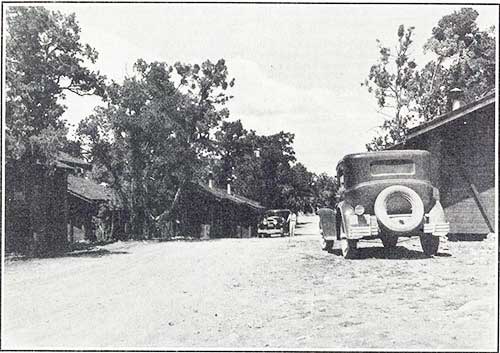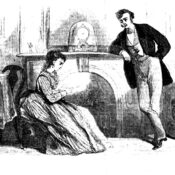It’s 1931 and the prices are incredibly low. You can buy bread for just 7¢. A quart of milk is 12¢. The national average for a month’s rent is $35. It’s hard to read these prices and not assume that life was a lot less expensive in those days.
With gasoline at 17¢ a gallon, and new Ford sedans available for a mere $450, Nina Wilcox Putnam told Post readers there was never a better time to drive to California.
The best bargain on the American market today is a trip across the country, which can now be had for practically the same price as staying at home.
Automobiles in 1931, she reports in her Post article, “What’ll It Cost Me To Drive To the Coast?” have greatly improved over the past ten years. When she first drove from New York to California in 1921—
I carried spare parts enough to make up a second car, including new magneto points, and used every darned one of them before the first California real estate salesman was sighted.
The roads are better, too. Back in 1921, she says, you wouldn’t think of driving across the western states without an axe “for chopping brush to get you out of gumbo roads during Missouri rainstorms” and an extra set of suspension springs “because you were practically certain to break a spring on what were playfully nicknamed ‘roads’ in Arizona.”
But even in 1931, Porter says, you had better bring better along a length of strong tow-rope, and a waterbag to hang on the front of the car so you won’t run out of water in the desert.
“And ah, yes, I almost forgot a waterproof tarpaulin. No matter how good the trunk on the back of your car, take it from me you’d better cover it with a tarpaulin. It’s a big square of treated canvas, and it really does prevent dust and moisture from working into the luggage and ruining that one good suit or dress which you’re taking along in case you feel like changing some night at a stylish hotel.
The modern driver of 1931 now has a choice of cross-country routes. Most travelers take the National Road, which runs from Atlantic City to San Francisco, but she recommends a new route between Washington, D.C., and Los Angeles.
If you are sick of cities and want a vacation from them; if you are tired of passing trucks and of being held up by traffic stop lights, let me submit the new Midland Trail. I’ll guarantee you’ll hardly meet a truck, see an advertising sign or lose a moment through traffic signals.
But let’s return to the question in Putnam’s title: just how much does it cost to drive from New York in California in 1931. Before she started, a New York travel agent had told her—
“With a small car it will cost you five cents a mile, including good but not fashionable hotels, food, gas and oil, and ordinary running repairs. We figure it will take you nine days.”
When she reached her destination outside Los Angeles, Putnam found that she had actually spent a little less than the predicted $165.

That’s a sizeable figure for a year when unemployment had risen to 16% and was continuing to climb. Yet it’s fairly inexpensive for nine days of sightseeing, hotels, and meals.Yet you could take the same trip for much less today.
Adjusted for 80 years of inflation, $1.00 in 1931 has the purchasing power of $14.50 today. So Putnam’s trip cost her the equivalent of $2,392 in 2011 dollars.
Today, the drive from New York to Los Angeles is 500 miles shorter. Using the gas prices of this last week, AAA’s fuelcostcalculator.aaa.com, determines that a new, inexpensive car (comparable to what Putnam drove) would consume $440 in gas. Furthermore, you wouldn’t need nine days to cover that distance. While I’ve known people who drove that distance in a heroic, three-day marathon, I’ll allow a modern driver six days (450 miles/day) and a daily allowance of $80 for hotels and $50 for food.
The total cost would be $1,220. Divide that number by 14.50 to reverse inflation, and the price in 1931 dollars, would be $84.
Even with the price of gasoline so high today, our per-mile cost has dropped from 5¢ to 3¢ in 80 years. This doesn’t even factor in the three days saved by driving modern highways in more dependable cars—and three days is just as valuable in 2011 as in 1931.
Become a Saturday Evening Post member and enjoy unlimited access. Subscribe now




Comments
Nina Wilcox Putnam – she wrote
Saturday Evening Post writes,
Including many tips and notes
On automobiling delights
Of her early cross country trips,
Calculating dollars and sense
To make it through the road hardships,
At a five cents per mile expense.
In her spare time, she did a deed
That took the whole U.S. by storm,
Got the I.R.S up to speed,
She made the first 1040 form.
So we have Nina to thank for
Yearly taxing trip fun galore.
In 1964 I drove from Plattsburgh NY to California for 96.60 in gas and never paid more than 12 dollars a night with four children on a trip from Plattsburgh NY to Modesto Ca, I drove a 64 Impala that got 12 miles per gallon and 10 miles per gallon with the air conditioning on. try that today
Ralf,If you get the chance to see the country via automobile,grab your wife and kids and visit the National Parks that have the wondrous sights that only the Master Builder could create